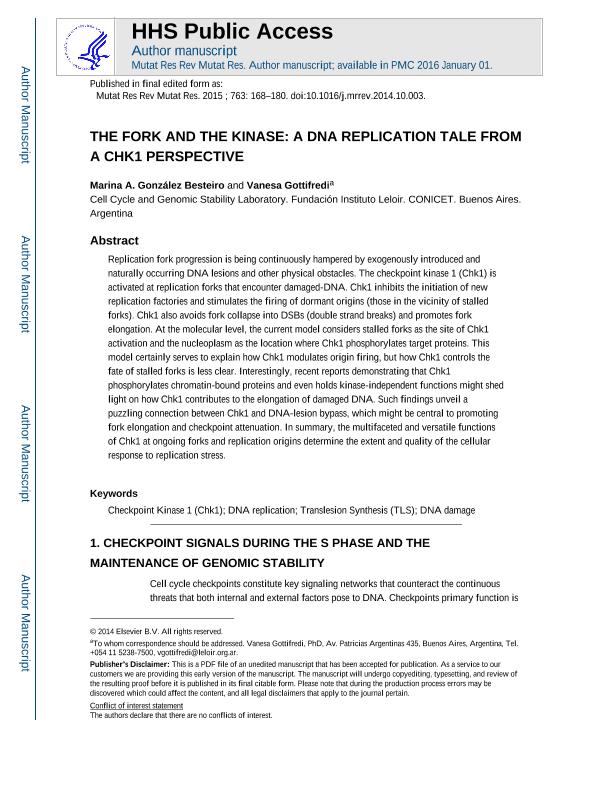Artículo
The fork and the kinase: A DNA replication tale from a CHK1 perspective
Fecha de publicación:
01/2015
Editorial:
Elsevier Science
Revista:
Mutation Research. Reviews In Mutation Research
ISSN:
1383-5742
Idioma:
Inglés
Tipo de recurso:
Artículo publicado
Clasificación temática:
Resumen
Replication fork progression is being continuously hampered by exogenously introduced and naturally occurring DNA lesions and other physical obstacles. Checkpoint kinase 1 (Chk1) is activated at replication forks that encounter damaged DNA. Subsequently, Chk1 inhibits the initiation of new replication factories and stimulates the firing of dormant origins (those in the vicinity of stalled forks). Chk1 also avoids fork collapse into DSBs (double strand breaks) and promotes fork elongation. At the molecular level, the current model considers stalled forks as the site of Chk1 activation and the nucleoplasm as the location where Chk1 phosphorylates target proteins. This model certainly serves to explain how Chk1 modulates origin firing, but how Chk1 controls the fate of stalled forks is less clear. Interestingly, recent reports demonstrating that Chk1 phosphorylates chromatin-bound proteins and even holds kinase-independent functions might shed light on how Chk1 contributes to the elongation of damaged DNA. Indeed, such findings have unveiled a puzzling connection between Chk1 and DNA lesion bypass, which might be central to promoting fork elongation and checkpoint attenuation. In summary, Chk1 is a multifaceted and versatile signaling factor that acts at ongoing forks and replication origins to determine the extent and quality of the cellular response to replication stress.
Palabras clave:
Chk1
,
Dna Replicación
,
Replication Origins
,
Fork Elongation
Archivos asociados
Licencia
Identificadores
Colecciones
Articulos(IIBBA)
Articulos de INST.DE INVEST.BIOQUIMICAS DE BS.AS(I)
Articulos de INST.DE INVEST.BIOQUIMICAS DE BS.AS(I)
Citación
González, Marina Alejandra; Gottifredi, Vanesa; The fork and the kinase: A DNA replication tale from a CHK1 perspective; Elsevier Science; Mutation Research. Reviews In Mutation Research; 763; 1-2015; 168-180
Compartir
Altmétricas




